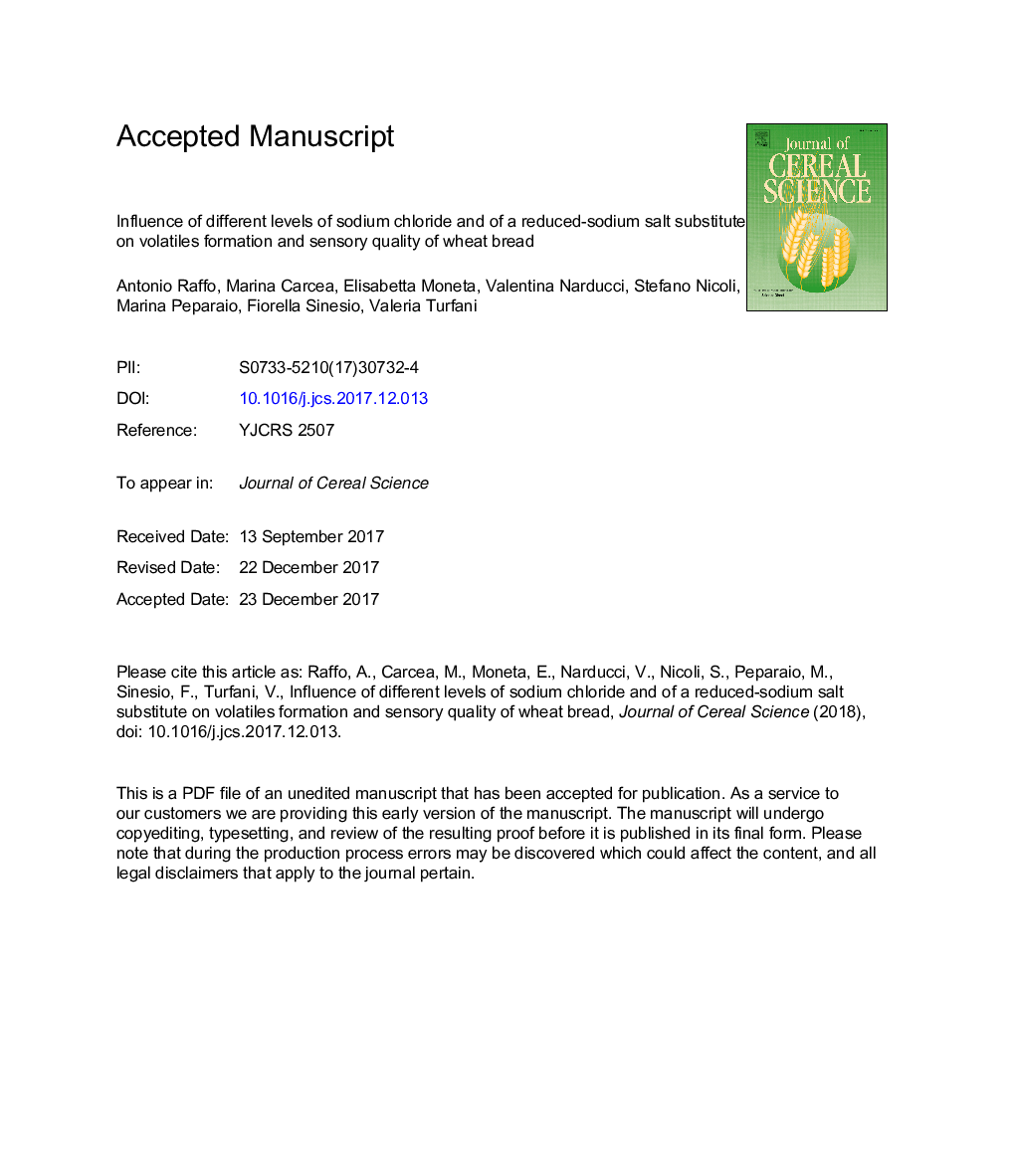| Article ID | Journal | Published Year | Pages | File Type |
|---|---|---|---|---|
| 8881544 | Journal of Cereal Science | 2018 | 29 Pages |
Abstract
The influence of sodium chloride or of the reduced-sodium salt substitute Pansalt® (NaCl 57%, KCl 28%, MgSO4 12%, lysine hydrochloride 2%, silica 1%, iodine 0.0036%) at two addition levels, 1.5% and 3% (on flour weight), on volatiles formation and sensory profile of yeasted wheat bread was investigated. Volatiles were determined by HS-SPME/GC-MS. An increased level of NaCl was associated to a reduced formation of 2-phenylethanol, a key odorant contributing to a yeast-like note. In contrast, at the 3% NaCl level the formation of most of Maillard reaction volatile products was promoted. Accordingly, sensory analysis highlighted a less intense yeasty note in the crumb, as well as more intense toasted aroma and flavour in the crust of bread with 3% NaCl with respect to the 1.5% counterpart. Bread with 3% NaCl was also characterized by more bitter crust and more even crumb structure. Increasing the addition level of Pansalt® from 1.5 to 3% produced similar effects on bread sensory attributes than NaCl. However, the substitution by Pansalt® was not able to maintain the same level of perceived saltiness as NaCl at both addition levels. In particular, Pansalt® at 3% produced a perceptible increase in bitter taste and aftertaste in the crust.
Keywords
Related Topics
Life Sciences
Agricultural and Biological Sciences
Agronomy and Crop Science
Authors
Antonio Raffo, Marina Carcea, Elisabetta Moneta, Valentina Narducci, Stefano Nicoli, Marina Peparaio, Fiorella Sinesio, Valeria Turfani,
